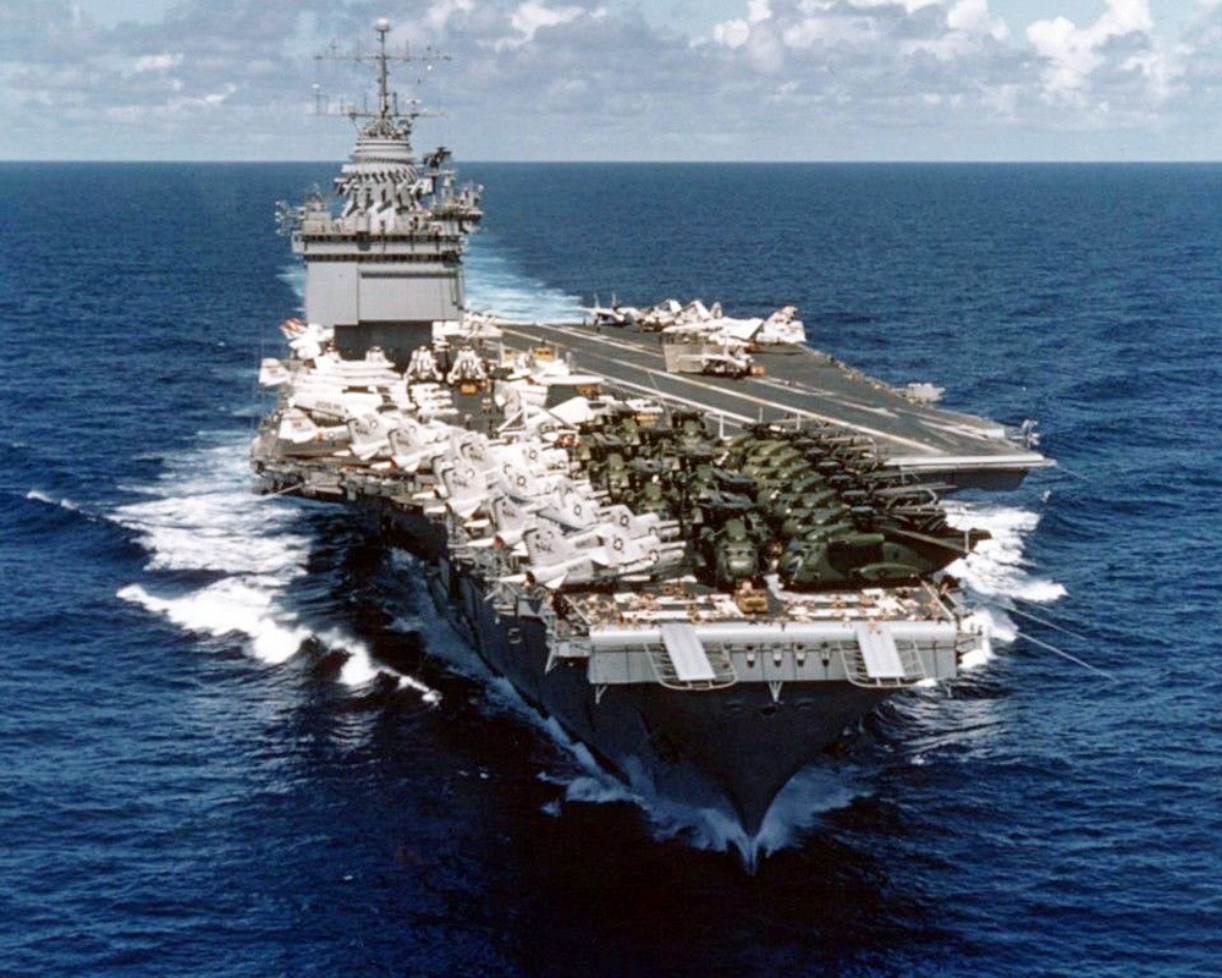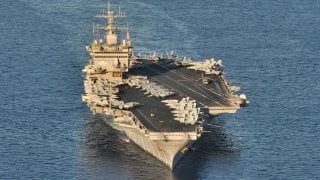USS Enterprise: The Best U.S. Navy Aircraft Carrier Ever? You Decide.
The USS Enterprise (CVN-65) was the world's first nuclear-powered aircraft carrier and the eighth U.S. Navy vessel to bear the name. Commissioned in 1961, it revolutionized naval warfare by offering unparalleled range and endurance, able to operate indefinitely without refueling.
What You Need to Know: The USS Enterprise (CVN-65) was the world's first nuclear-powered aircraft carrier and the eighth U.S. Navy vessel to bear the name. Commissioned in 1961, it revolutionized naval warfare by offering unparalleled range and endurance, able to operate indefinitely without refueling.

-As the longest naval vessel ever built at 1,123 feet, it was a technical marvel powered by eight nuclear reactors producing 280,000 horsepower, enabling speeds over 33 knots. The Enterprise played pivotal roles in significant events like the Cuban Missile Crisis and post-9/11 operations in Afghanistan.
-Decommissioned in 2012 after 51 years of service, it remains one of the Navy's most important and iconic aircraft carriers.
USS Enterprise: The Revolutionary Nuclear-Powered Carrier That Changed Naval Warfare
While CVN-65 was the eighth U.S. Navy vessel to bear the Enterprise name, she was the first nuclear-powered aircraft carrier in the world, marking a watershed moment in the way that U.S. forces are deployed around the world.
Some even say this aircraft carrier just might be the Navy's most important and even best aircraft carrier ever.
USS Enterprise and Endless Possibilities
An aircraft carrier is a unique piece of military technology, for an aircraft carrier is essentially a mobile airfield that can be stationed (theoretically) anywhere atop the 75 percent of the Earth’s surface that is covered with water. The aircraft carrier is like an airbase on foreign soil – only more valuable – because an airbase is of course a fixed location. The aircraft carrier is a flexible location, allowing the United States to project airpower on any continent.
In the past, before the Enterprise, carriers relied on non-nuclear power such as diesel, which meant that the carriers relied upon refueling as a crutch.
Without refueling, the carriers could not continue to operate, limiting their range and endurance and presenting logistical challenges for refueling an aircraft carrier that could be parked on some far-flung continent. That changed with the Enterprise, however, which relied upon nuclear power – and was able to stay at sea indefinitely, for decades if needed.
Foreign Policy Implications
The U.S. employs the most hyperactive, adventurous foreign policy of any nation on Earth. One could argue that the endurance, range, and flexibility of the Enterprise – and the succeeding fleet of nuclear-powered vessels – seems to have manifested itself in the U.S.’s hyperactive foreign policy.
Today, the U.S. has eleven nuclear-powered submarines, each capable of patrolling the world’s oceans indefinitely – a capability that U.S. leaders employ liberally.
Or was it the other way around? Was the Enterprise created, in the late 1950s, to meet the needs of a foreign policy that was embroiled in global conflict with the Soviets and increasingly looking to assert itself globally?
The U.S. had been successful in Europe and the Pacific and had grown to appreciate the need for projecting its power on multiple fronts, simultaneously. The nuclear-powered aircraft carrier offered a practical solution.

Chicken or egg? It’s probably a little bit of both. The nuclear-powered aircraft carrier was a practical solution – and U.S. war planners have adjusted their war planning to accommodate the remarkable capabilities that nuclear-powered aircraft carriers provide.
A Technical Marvel
The USS Enterprise is the longest naval vessel ever built. At 1,123 feet, the Enterprise is only about 300 feet shorter than the Empire State Building. The Enterprise is only ten feet shorter than the RMS Queen Mary 2, the massive ocean liner.
The Enterprise is over three hundred feet longer than the famed RMS Titanic.
Yes, the Enterprise is long – with a 132-foot beam at the waterline and a 39-foot draft. To propel such a massive ship eight Westinghouse A2W nuclear reactors powered four Westinghouse geared steam turbines, which turned four propeller shafts producing 280,000 horsepower.
With the propulsion system operating at capacity, the Enterprise was able to achieve speeds of 33.6 knots per hour.
And while the Enterprise’s main offensive feature was the 60+ aircraft she carried; the ship was also outfitted with some armament. Notably, the Enterprise was outfitted with a prototype Basic Point Defense Missile System (BPDMS). The BPDMS carried two eight-round box launchers filled with Sea Sparrow missiles. The Enterprise was also outfitted with two NATO Sea Sparrow (NSSM) and three Mk-15 Phalanx CIWS gun mounts.
Later in Enterprise’s service career, one of the Phalanx CIWS mounts would be removed to make room for two 21-cel RIM-116 Rolling Airframe Missile launchers.
A Storied Service Career
The Enterprise was commissioned in 1961, just in time for the Cuban Missile Crisis.
When President Kennedy learned that the Soviet Union was on the verge of deploying nuclear missiles to Cuba, he ordered a blockade of the island nation to physically prevent Soviet ships from delivering the missiles. Five U.S. aircraft carriers participated in the blockade – Independence, Essex, Lake Champlain, Randolph, and the newly commissioned Enterprise. The blockade helped prevent the missile shipment and ultimately contributed to the crisis’s diffusion.
The incident is generally considered the closest that the U.S. and Soviet powers ever came to a nuclear exchange.
Forty years later, the still-serving Enterprise would again respond to crisis. In September 2001, the Enterprise was beginning to sail home from a deployment in the Persian Gulf.
When news of the September 11th terrorist attacks reached the Enterprise, the ship turned around without orders and returned to the Persian Gulf. One month later, aircraft from the Enterprise would run hundreds of sorties against al-Qaeda and Taliban targets in Afghanistan.
The Enterprise was finally decommissioned in December 2012, after a half-century in service.
About the Author
Harrison Kass is a prolific defense and national security writer with over 1,000 published pieces. An attorney, pilot, guitarist, and minor pro hockey player, Harrison joined the US Air Force as a Pilot Trainee but was medically discharged. Harrison holds a BA from Lake Forest College, a JD from the University of Oregon, and an MA from New York University. Harrison listens to Dokken.
All images are Creative Commons and or Shutterstock.


